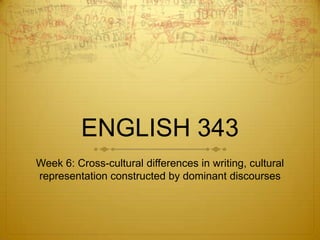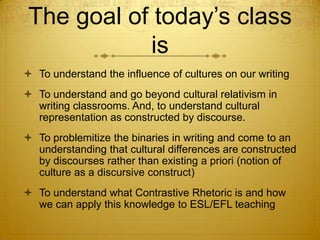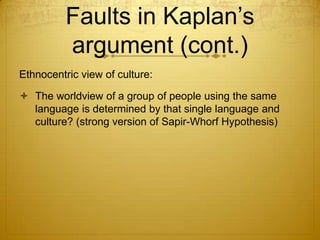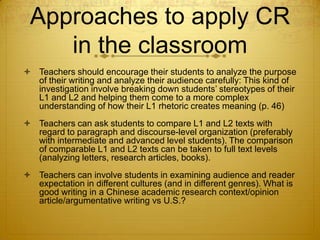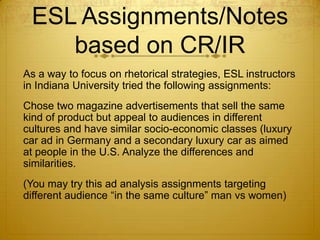The document discusses a class that focuses on understanding the influence of culture on writing. It introduces contrastive rhetoric, which examines differences in writing across cultures. While Kaplan's early work in this area made broad generalizations, later scholars recognized that writing is influenced by many factors beyond just one's native language and culture. The class considers how to apply contrastive rhetoric insights to teaching English as a second language in a way that is critically aware of issues of power and discourse. It also discusses responding effectively and sensitively to international students' writing assignments in English.
